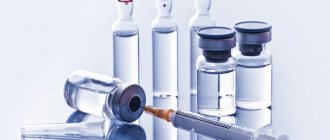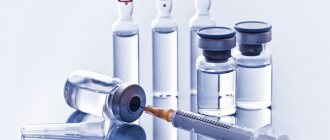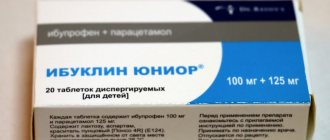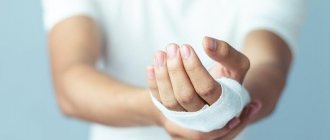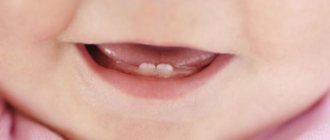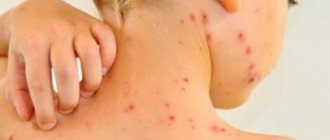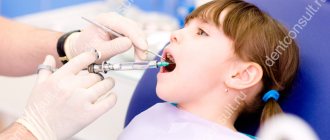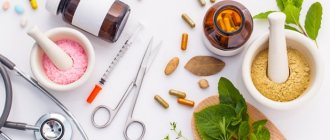Nonsteroidal anti-inflammatory drugs (NSAIDs) are one of the most popular pharmaceutical products. They are prescribed during the treatment of a number of diseases and conditions, often in entire courses. Even with clear instructions from the attending physician, many compatriots have doubts and look for information about drugs on the Internet. And then they come to the pharmacy and ask the pharmacist questions, hoping to justify their guesses or dispel doubts. In this situation, the head manager needs, on the one hand, to help the pharmacy visitor, and on the other hand, not to take on the role of a doctor. It is in this vein that we will cover the topic of topical NSAIDs today - in the form of competent answers to customer questions.
What does “when used correctly” mean? Anointed, and that’s it.
It is advisable to rub in topical forms of NSAIDs for a while rather than just apply them. The analgesic and anti-inflammatory effect of the ointment will be much higher if you do not just “anoint” it, but actively rub the product into the skin over the sore spot for some time. In the course of relevant studies, it was found that even 45 seconds of rubbing diclofenac diethylamine gel five times increased the transdermal delivery of the drug compared to simple application to the skin. And you need to remember that pain-relieving ointments based on NSAIDs act on areas of pain located immediately under the skin. If we talk about joints, then these are the knees, elbows and small joints of the hands. The local form most likely “will not reach the hip joint.” It should be rubbed “around the circumference” of the limb, for example, not only into the dorsum, but also into the palmar surface of the interphalangeal joint [6, 7].
What is anesthesia used for in pediatrics?
Until now, in the views of specialists and parents of young patients, there are still quite a lot of myths about how children perceive and experience pain.
Among such misconceptions one can find the following conclusions: children do not perceive pain the same way as adults; children do not remember the pain they experienced previously; children always tell adults when they are in pain; children always perceive pain in the same way; It is useful for children to endure pain, as it helps build character and willpower; pain relief leads to psychological dependence in the child, etc. Recent studies have shown that the younger the child, the more acutely he experiences pain, but, unfortunately, he cannot always report this21.
Pain is one of the earliest developing psychophysical functions associated with the most “ancient” structures of the brain. By 30 weeks of fetal development, all pathways for conducting and perceiving pain have already been formed. From this time on, the child perceives pain, and its intensity is often even greater than in adults.
However, the subjective nature of pain makes it a difficult concept to measure. This is especially true for those who find it difficult to express their pain in words. As a result, according to the researchers, until the early 1980s, pain in newborns was rarely treated adequately, because It was assumed that due to the immature nervous system, infants are practically unfamiliar with pain. The work of Anand et al showed that in premature newborns after surgery with conventional minimal anesthesia, stronger reactions occurred (increased concentrations of catecholamines, glucagon, corticosteroids), they experienced more postoperative complications, and higher mortality compared to the group of newborns who received complete anesthesia . McCrath and Unruh showed that the immaturity of newborns relates not to their ability to experience pain, but to the exceptionality of their inability to signal it to adults.
Currently available evidence allows professionals to urge the provision of pain management to children of all ages, if only because all human beings have the right to adequate pain control, whether they can report it or not.
It is also worth considering that the general perception of treatment and illness by an adult patient and a child is different. An adult is able to appreciate the benefits of treatment procedures and medical manipulations and positively perceive the treatment situation and medical personnel, despite the pain and discomfort experienced. A child’s thinking (up to approximately early adolescence) is concrete, visual, and more fragmented. Thus, a large randomized study showed that children of almost all ages consider needles and the procedures associated with their use to be the most frightening and painful component of a visit to the doctor.
Due to the deficit of semantic regulation, emotions and sensations play a large role in assessing the situation and adapting to it.
Therefore, therapeutic and preventive medical procedures associated with painful sensations or diseases accompanied by pain are often associated in children with punishment and violence. Children often feel guilty for their own poor health, regarding this as a manifestation of their own “badness.” Even children who cannot yet speak remember very well all the details of painful procedures and events. When the procedure is repeated, they experience an increase in the “stress” reaction already at the time of treating the skin before the procedure. Negative experiences can intensify the pain response time after time, like a snowball, determining the child’s further response to painful stimuli.
Memory forces the body to avoid those situations that, thanks to the experience of pain, have acquired the meaning of “dangerous” in the child’s life. If this pain is the result of medical procedures, treatment, or illness, then such avoidance is called “medical PTSD syndrome.” A well-known manifestation of this disorder is “needle phobia,” familiar to many adults.
Despite the fact that pain has a signaling function, indicating a problem, damage in the body, mobilizing the body's reserve forces to ensure the reaction of flight and defense, its “positive” meaning is often extremely exaggerated. Pain calls for help and treatment. From a psychological point of view, enduring pain is not only useless, but also harmful.
Pain worsens the quality of life (perception of opportunities and fullness of life) of children of different ages and with various diseases, and in cases of various medical procedures. Thus, in adolescents with arthritis, high levels of pain led to a decrease in quality of life indicators such as physical, emotional and social functioning. Children with chronic abdominal pain of nonorganic origin, as well as children with gastroisophagitis or inflammatory bowel disease accompanied by pain, experience a decrease in quality of life in all respects compared to healthy peers. Pain has pronounced negative effects: both short-term and delayed.
Some authors, depending on the severity of the reaction and the duration of the consequences in response to medical situations and diseases accompanied by various pains, divide acute stress disorder (OST) and post-traumatic stress disorder (PTSD). The first (OST) is characterized predominantly by dissociation, avoidant behavior, anxiety and excitability, obsessive repetition of experiences, symptoms last from 2 days to 4 weeks and gradually fade away. The second (PTSD) is also characterized by repetition of the experience, avoidant behavior, and increased excitability, but the symptoms last for at least one month. According to ICD-10 and DSM-IV, post-traumatic stress disorder is classified as an anxiety disorder. Depending on age, the ability to cope with traumatic pain experiences, the characteristics of medical situations, children’s reactions may be different. Infants and young children show signs of regressive behavior, whining, enuresis, loss of newly acquired skills, loss of speech, difficulty falling asleep or waking up at night. Children of preschool age strive to reproduce their experiences in games; along with this, difficulties in falling asleep and nightmares, a decrease in speech activity, increased separation anxiety (when parting with loved ones), as well as fears, for example, fear of the dark, may also appear. Children of primary school age demonstrate nightmares, fixation on a traumatic event, obsessive repetitions, various psychosomatic reactions, overexcitation, inappropriate emotional reactions, fears, avoidant behavior, and aggressive attacks. In adulthood, a desire for greater independence may appear - early sexual relations, the desire to leave home - or, conversely, an age-inappropriate increase in dependence. Deviant behavior and use of psychoactive substances are also possible. Teenagers are more likely to experience feelings of guilt and intrusive memories than younger children.
At any age, a child, faced with the experience of pain, often loses interest in ordinary activities, his self-esteem decreases, and his prospects for the future are often lost. Such experiences can upset relationships with loved ones and friends, especially if the pain is associated with life-saving procedures or a serious illness, or violence.
In turn, the consequences of PTSD can lead to disruption of the child’s adaptation at school, usual life and environment. Different types of traumatic situations associated with painful experiences in children were compared: type I traumatic situations associated with sudden events (fire, accidents with injuries, various medical procedures) and type II situations associated with prolonged exposure to an unpleasant event (cancer disease, organ transplantation). ). Both cases were characterized by avoidant behavior in children, increased anxiety, and repetition of situations. For children with type I trauma, complete detailed memorization of the situation, the development of premonitions, and impaired perception of reality were more typical, while children with type II trauma demonstrated greater denial of the situation, dissociation, and lack of feelings or problems. In response to medical procedures, both type I responses can develop (if the procedures involve dangerous interventions) and type II (if more painful procedures are repeated many times, and the treatment itself is lengthy and aggressive).
The various psychological consequences of pain experience in children are analyzed depending on the experience and the context of various diseases. The painful experience associated with burns often provokes nightmares, enuresis, and phobias in children for a year or even more after the accident. Painful experience associated with injuries and car accidents leads to the fact that children are worse at differentiating fear, whether it is associated with the accident itself or with painful procedures during treatment. Replaying of traumatic situations, reproducing the situation in dreams, and avoidant behavior were noted.
In response to surgery, which is accompanied by painful experiences, more than 80% of children and their families experience acute stress. Such trauma provokes fears, depression, and generalized anxiety. One in five children develop post-traumatic stress disorder that lasts more than 4 months and manifests itself in everyday life. Much of this stress is triggered by the level of pain experienced during illness and treatment. More severe early stress (acute stress reaction) in children and parents may help prevent the development of post-traumatic stress in children. Particular attention is paid to the influence of pain in children with cancer. Increased severity of PTSD symptoms, compared with other conditions, is associated with length of treatment, painful interventions, and intensity of treatment. Especially in young children, the association of PTSD with subjective treatment measures increased.
Data from the US Center for Pediatric Traumatic Stress (Philadelphia) also confirm that the experience of pain in children can have significant negative short-term and long-term psychological and social consequences . Among the psychological consequences in adult life are: chronic pain disorder, anxiety, various phobias, hypochondriacal personality development, panic attacks. Among the social ones are reactions of avoidant and evasive behavior from new and unfamiliar situations, which significantly reduce the level of social adaptation. Significant social and emotional problems in the case of pain in childhood are experienced not only by children, but also by their parents.
Some chronic and acute diseases of children, accompanied by pain, unfortunately, end in death. In such cases, the fact that the child suffered less and suffered less pain before death can be crucial for the family in terms of rehabilitation and coping with the loss of the child. Reducing pain experiences reduces the severity of medical stress in children and their families (...).
Currently, to control pain of various origins, special protocols for pain assessment and treatment have been developed and continue to be developed. Their main component is the use of various medicinal methods of pain relief (..). To control pain in children, non-pharmacological and psychotherapeutic methods of assistance are also used.
In some cases, these methods can be carried out by parents and medical staff (and sometimes by the children themselves), specially trained in special techniques; in others, by experienced psychologists and psychotherapists. One of the groups of such methods is associated with the creation of a special environment in which medical manipulations with a child take place, accompanied by pain. Typically, step-by-step information is used to inform the young patient and parent about what will happen during the procedure, what the child will see and hear. At the same time, it is recommended to avoid incomprehensible medical terms, highly disturbing and emotionally charged words, and not to try to convince that the procedure will be absolutely painless. The use of jokes, clear commands, praising the child, reading books describing the procedure, and sincere and open communication have a positive impact during the procedures. Additional comfort for children can be created due to the appearance of the room where procedures and manipulations are carried out, where toys or a cute blanket are placed, walls are painted and pictures are hung. It is also useful to include the smallest patient in the procedure: the child can be asked, for example, to count down the time until the end of certain stages of the procedure or to hold some medical instrument; It is important to give the child a sense of freedom, for example, by choosing a particular bandage, deciding which hand to take the test from, etc. If a child is hospitalized and undergoing treatment in a hospital, it is not recommended to carry out procedures in the ward, on his crib. It is better to use a special room for manipulations in order to maintain the child’s feeling of safety at least in his room. It is important to respect its boundaries, emphasized by the presence of a schedule of procedures and activities, accompanying rounds with a preliminary knock on the door of the ward where the child is.
Parents who remain with them can reduce pain and distress in children; they can also learn from them what may be stressful for their child in the procedure and what can help them better cope with the situation. However, it is important not to ask parents to restrain the child, to instruct parents not to threaten the child with additional injections, but, on the contrary, to set them the task of behaving in such a way as to help “hold back” the pain. To achieve this, various methods of distracting the child during the procedure in different ways are widely used, depending on the child’s age, hobbies and interests. Distracting conversations (about school, hobbies) are always available. For infants, physical contact between mother and baby, for example, pressing him to the mother's breast, is often used as a distraction during the procedure. Tactile distraction is also used with older children: using pressure on some point of the body, stroking, patting.
Among the recommendations for similar control of pain in children for medical personnel are the following: conduct activities in a calm and friendly atmosphere; be confident and avoid apologies, excuses, criticism; avoid conversations with colleagues, parents, students (especially about side effects of the procedure); try to avoid stressful influences (sharp sounds); Do not play it safe during procedures. For this purpose, special trainings and seminars are organized for staff.
Cognitive (behavioral) psychotherapy can be used to combat post-traumatic stress syndrome To prevent and treat medical stress, it is proposed to provide information to children and parents of the patient about the disease, the causes of pain and painful procedures; early diagnosis of pain response; raising the level of awareness of specialists themselves, including on the problems of children experiencing pain and ensuring pain management.
Thus, it becomes obvious that the problem of pain in pediatrics currently occupies a special place. Childhood experiences can make a person more or less susceptible to pain. Lack of pain relief and pain treatment can have serious negative consequences for the development of a harmonious and well-adjusted personality, as well as the establishment of a doctor-patient partnership in adult life21.
Which topical NSAID is best?
Everything is individual. If the analgesic effect of oral and injectable forms of NSAIDs can be more or less ranked, then an objective comparative assessment of topical drugs is very difficult. The reason for this is that, along with the actual active substance, the intensity of rubbing, excipients (for example, dimethyl sulfoxide) and the placebo effect play a significant role. Most studies on the effectiveness of topical NSAIDs have focused on diclofenac and ketoprofen. The increased attention to them is due to the fact that diclofenac is the only NSAID whose topical forms are approved by the American Food and Drug Administration (FDA), and ketoprofen, accordingly, is approved in most other countries of the world. Reliable data comparing these two drugs with each other have not yet been published. No one questions the effectiveness of other non-steroidal anti-inflammatory drugs for external use (ibuprofen, phenylbutazone, piroxicam, nimesulide, etc.); each of them was the subject of several clinical trials at one time, but the geography of their use is much more modest and is often limited to a few developing countries [2, 8].
Deep sedation with Propofol - drug-induced sleep
Dental anesthesia for children
Dental treatment for young children under anesthesia raises the maximum number of questions among adults. The main ones relate to the safety of the procedure and side effects. Parents are also interested in what kind of anesthesia they give their children during dental treatment - whether there are high risks of negative consequences.
Is anesthesia harmful for dental treatment for children?
Sevoran is a non-narcotic, non-toxic, completely safe drug that is used in dentistry for treatment under general anesthesia. It is given to the child through a mask, instantly putting him to sleep.
Among the advantages of the drug, confirming its safety for young patients:
- excreted from the body unchanged;
- does not affect internal organs;
- does not depress the heart;
- maintains physiological blood pressure readings.
Sevoran simply turns off consciousness and does not cause side effects. Additional positive points:
- pain relief - doctors do not administer additional drugs to the child;
- pleasant smell - children themselves breathe through the mask with pleasure;
- quick recovery from anesthesia - awakening takes only 10-15 minutes.
The high quality of the composition ensures that the use of anesthesia for dental treatment for children eliminates any unpleasant consequences.
Anesthesia at the dentist for children: features
Having figured out whether it is possible to treat a child’s teeth under general anesthesia, parents begin to prepare the child for the procedure.
To do this, the young patient is prescribed a series of examinations:
- Consultation with a dentist.
The doctor must assess the amount of work - determine caries, pulpitis, and the intensity of tooth destruction. Together with the parents, a decision will be made on how many teeth to treat, what to remove, and whether prosthetics are necessary. - Testing, primary diagnostics.
The basic set of studies is general and biochemical blood tests, electrocardiogram (ECG).
- Obtaining permission from a pediatrician.
If there are chronic diagnoses, the child is also sent for a consultation with a specialized specialist in order to eliminate any risks during dental treatment.
When all issues are agreed upon, the doctor sets a date for treatment and gives final recommendations.
Soldatenkova Alina
When removing baby teeth, it is very important to preserve space for future permanent ones. To do this, they either undergo prosthetics or go to an appointment with an orthodontist to install an orthodontic seat holder.
Do excipients in the local form of NSAIDs matter?
Yes, they improve skin permeability and perhaps enhance the therapeutic effect in a certain way. In separate studies, for example, topical formulations of diclofenac with dimethyl sulfoxide (DMSO) and diclofenac diethylamine 1.16% have been shown to penetrate the skin faster than “regular” diclofenac sodium gels. In addition, DMSO itself may have a slight anti-inflammatory effect. There is no solid evidence of an increase in the analgesic effect due to the listed supplements, but their use at least helps to overcome the individual characteristics of the skin [7, 9–11].
Can I take NSAID tablets and use the topical form at the same time?
This is not directly prohibited by the instructions for use, but it is not recommended, and, apparently, does not make sense. According to the only credible study on this topic, there was no significant increase in the analgesic effect when combining local and systemic forms of NSAIDs. At the same time, this use of drugs slightly increased the frequency of rectal bleeding. In clinical trials, oral administration of diclofenac and ibuprofen at doses 2 and 3 times higher than recommended also did not lead to increased pain relief. The effect of a combination of tablets and a topical form of NSAIDs will most likely not be pronounced. At the same time, the likelihood of unwanted reactions slightly increases. Therefore, this combination is not recommended. Usually, if a local remedy does not help, the doctor cancels it and transfers the patient to oral administration [12, 13].
Buy a good ointment for bruises: “Finalgon”
The drug "Finalgon" contains 2 active ingredients at once - nicoboxil and nonivamide. Therefore, it is considered one of the best remedies for relieving pain and counteracting inflammatory processes. Causes a local irritation reaction and quickly relieves pain in the affected areas.
It is used for the symptomatic treatment of various pathologies - lumbago, arthritis, bursitis, acute low back pain, sciatica, arthralgia, for the treatment of the consequences of sports injuries and myalgia associated with increased physical activity. Also used to warm up muscles before starting a workout.
You can buy the product in a pharmacy even without a doctor’s prescription at a price of 450 rubles per 35 g package. It is worth remembering the possible side effects associated with shortness of breath, burning, paresthesia, cough, and allergic reactions. It is also important to understand that the gel should not be used by children under 17 years of age inclusive. Pregnant and breastfeeding women can use the ointment, but only if absolutely necessary and in consultation with a doctor.
Is it possible to use topical NSAIDs for stomach erosions or ulcers?
According to the instructions, it can be done “with caution.” The concentration of the active substance in the blood plasma after the use of topical NSAIDs is less than 10% of that achieved by oral administration. The incidence of adverse reactions from the gastrointestinal tract when using local forms of NSAIDs does not differ from that when rubbing placebo and is significantly lower than when using systemic agents. However, just in case, these drugs are not recommended to be applied to the skin during gastrointestinal bleeding and exacerbation of gastric or duodenal ulcers [5, 14].
Ointment for bruises and injuries: “Apizartron”
"Apizartron" contains bee venom and auxiliary components. It has a pronounced analgesic effect, helps with sprains and bruises. Used to warm up muscles, including during sports activities. Stimulates blood circulation, eliminates symptoms of neuritis and sciatica, as well as rheumatic joint pathologies.
You can buy the ointment at the pharmacy without presenting a prescription. It can be used by both adults and children over 12 years of age (over 6 - with caution). It is not allowed to use during any trimester of pregnancy and during breastfeeding.
If you have an individual intolerance to bee venom, a number of allergic reactions may occur, including redness, swelling, itching and rash. In these cases, it is necessary to replace the drug.
How many times a day and for how long can you apply such drugs?
Typically three to four times a day for two weeks. Topical NSAIDs act quite quickly - the effect occurs within an hour - and help control acute somatic pain of moderate intensity. They cope worse with chronic pain. If there is no effect within two weeks of proper use, you should consult a doctor. There is a chance that he will recommend switching to oral forms or another group of drugs.
Sources
- Derry S, Conaghan P, Da Silva JA, et al. Topical NSAIDs for chronic musculoskeletal pain in adults. Cochrane Database Syst Rev. 2016; 4: CD007400. https://www.cochranelibrary.com/cdsr/doi/10.1002/14651858.CD007400.pub3/full
- Derry S, Wiffen PJ, Kalso EA, et al. Topical analgesics for acute and chronic pain in adults – an overview of Cochrane Reviews. Cochrane Database Syst Rev. 2017; 5: CD008609. https://www.cochranelibrary.com/cdsr/doi/10.1002/14651858.CD008609.pub2/full
- Klinge SA, Sawyer GA. Effectiveness and safety of topical versus oral nonsteroidal anti-inflammatory drugs: a comprehensive review. Phys Sportsmed. May 2013; 41(2): 64–74. https://www.ncbi.nlm.nih.gov/pubmed/23703519
- Kloppenburg M, Kroon FP, Blanco FJ, et al. 2022 update of the EULAR recommendations for the management of hand osteoarthritis Annals of the Rheumatic Diseases 2019; 78: 16–24. https://ard.bmj.com/content/78/1/16
- Honvo G, Leclercq V, Geerinck A, et al. Safety of Topical Non-steroidal Anti-Inflammatory Drugs in Osteoarthritis: Outcomes of a Systematic Review and Meta-Analysis. Drugs Aging. 2019; 36(Suppl 1): 45–64. https://www.ncbi.nlm.nih.gov/pmc/articles/PMC6509095/
- Hasler-Nguyen N, Fotopoulos G. Effect of rubbing on the in vitro skin permeation of diclofenac-diethylamine 1.16% gel. BMC Res Notes. 2012 Jun 21; 5: 321. https://www.ncbi.nlm.nih.gov/pmc/articles/PMC3424122/
- Hagen M, Baker M. Skin penetration and tissue permeation after topical administration of diclofenac. Curr Med Res Opin. 2022 Sep; 33(9):1623–1634. https://www.tandfonline.com/doi/full/10.1080/03007995.2017.1352497
- Rafanan BS Jr, Valdecañas BF, Lim BP, et al. Consensus recommendations for managing osteoarthritic pain with topical NSAIDs in Asia-Pacific. Pain Manag. 2018; 8 (2): 115–128. https://www.futuremedicine.com/doi/10.2217/pmt-2017-0047?url_ver=Z39.88-2003&rfr_id=ori:rid:…
- Pradal J, Vallet CM, Frappin G, Bariguian F, Lombardi MS. Importance of the formulation in the skin delivery of topical diclofenac: not all topical diclofenac formulations are the same. J Pain Res. 2019; 12: 1149–1154. https://www.dovepress.com/importance-of-the-formulation-in-the-skin-delivery-of-topical-diclofen-pee…
- Galer BS. A comparative subjective assessment study of PENNSAID® and Voltaren Gel®, two topical formulations of diclofenac sodium. Pain Pract. 2011; 11 (3): 252–60. https://onlinelibrary.wiley.com/doi/abs/10.1111/j.1533-2500.2010.00420.x
- Tieppo Francio V, Davani S, Towery C, Brown TL. Oral Versus Topical Diclofenac Sodium in the Treatment of Osteoarthritis. J Pain Palliat Care Pharmacother. 2022 Jun; 31 (2): 113–120. https://www.tandfonline.com/doi/abs/10.1080/15360288.2017.1301616?journalCode=ippc20
- Simon LS, Grierson LM, Naseer Z, et al. Efficacy and safety of topical diclofenac containing dimethyl sulfoxide (DMSO) compared with those of topical placebo, DMSO vehicle and oral diclofenac for knee osteoarthritis. Pain. 2009; 143(3):238–45. https://insights.ovid.com/article/00006396-200906000-00016
- Van Amburgh J. Can Topical and Oral NSAIDs Be Combined for Pain Relief? Medscape. https://www.medscape.com/viewarticle/861740
- Roth SH. Nonsteroidal anti-inflammatory drug gastropathy: new avenues for safety. Clin Interv Aging. 2011; 6: 125–31. https://www.ncbi.nlm.nih.gov/pmc/articles/PMC3131982/
- Kowalski ML, Makowska JS, Blanca M, et al. Hypersensitivity to nonsteroidal anti-inflammatory drugs (NSAIDs) – classification, diagnosis and management: review of the EAACI/ENDA and GA2LEN/HANNA. Allergy 2011; 66:818–829. https://www.eaaci.org/attachments/668_Kowalski%20Hypersensitivity%20to%20nonsteroidal%20anti-inflamm…
- Rogers NV, Rowland K. An alternative to oral NSAIDs for acute musculoskeletal injuries. J Fam Pract. Mar 2011; 60 (3): 147–8. https://www.ncbi.nlm.nih.gov/pmc/articles/PMC3183960/
What drugs are used for topical anesthesia?
In pediatric dentistry, solutions, emulsions, ointments, pastes, gels, aerosols are used, as well as special dispersed tablets, caramels and children's chewing gum. They contain highly concentrated anesthetics without vasoconstrictors. Most often, dentists use solutions, sprays and aerosols.
- "Babident" is intended for pain relief during the eruption of primary teeth in infants. Apply 1-2 drops of the solution with a cotton swab or finger to the mucous membrane of the gums 1-3 times a day.
- In pediatric dentistry, Perylene-Ultra solution is often used.
- The most popular gels and pastes are “Xylonor”, “Instilagel”, “Aroma paste carried”, Jen-Dental, Xyligel.
- The most commonly used ointments are 2-3% dicaine, 5% lidocaine, 2-3% falicaine, etc.
